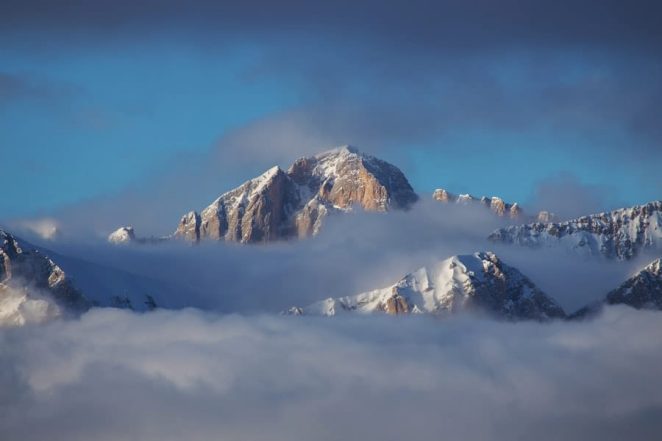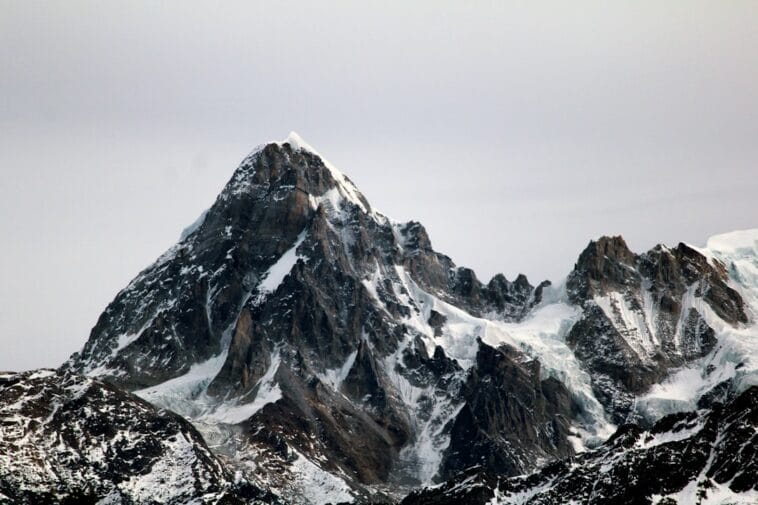Nestled between Zimbabwe and Mozambique, the Chimanimani Mountains stand as a breathtaking testament to nature’s artistry. This rugged range, characterized by its dramatic peaks and lush valleys, offers a unique blend of biodiversity and stunning landscapes. As you explore this region, you will encounter a variety of ecosystems, from dense forests to open grasslands, all teeming with wildlife.
The mountains are not just a feast for the eyes; they also hold cultural significance, with local communities steeped in rich traditions and histories that date back centuries. The Chimanimani Mountains are a haven for outdoor enthusiasts, particularly those with a passion for rock climbing. The region’s unique geological formations provide an array of climbing opportunities that cater to both beginners and seasoned climbers alike.
With its striking cliffs and challenging routes, the mountains beckon adventurers from around the globe. As you delve deeper into the allure of Chimanimani, you will discover why it has become a sought-after destination for rock climbing aficionados.
Key Takeaways
- The Chimanimani Mountains are a popular destination for rock climbing enthusiasts due to their stunning natural beauty and challenging rock formations.
- Rock climbing in Chimanimani offers a unique and thrilling experience for both beginner and experienced climbers, with a variety of routes to suit different skill levels.
- Some of the best rock climbing spots in Chimanimani include Bridal Veil Falls, Devil’s Peak, and the Eastern Buttress, each offering a different set of challenges and breathtaking views.
- Safety measures for rock climbing in Chimanimani include using proper equipment, checking weather conditions, and being aware of potential hazards such as loose rocks and wildlife.
- Essential equipment for rock climbing in Chimanimani includes a harness, helmet, climbing shoes, ropes, and carabiners, as well as a first aid kit and plenty of water.
The Appeal of Rock Climbing in Chimanimani
Rock climbing in Chimanimani is not merely a sport; it is an experience that intertwines physical challenge with the beauty of nature. The thrill of scaling the rugged cliffs while surrounded by breathtaking vistas creates an adrenaline rush that is hard to replicate elsewhere. Each ascent offers a new perspective on the landscape, allowing you to appreciate the intricate details of the mountains and valleys below.
The sense of accomplishment that comes with reaching the summit is unparalleled, making every climb a memorable adventure. Moreover, the diverse climbing routes available in Chimanimani cater to climbers of all skill levels. Whether you are a novice looking to learn the ropes or an experienced climber seeking your next challenge, you will find routes that suit your abilities.
The variety of rock types and formations adds to the excitement, as you can experiment with different climbing techniques and styles. This adaptability makes Chimanimani an attractive destination for climbers who wish to hone their skills while enjoying the stunning surroundings.
Best Rock Climbing Spots in Chimanimani

When it comes to rock climbing in Chimanimani, several spots stand out for their unique features and challenges. One of the most popular locations is the iconic Chimanimani Peak, which offers a range of routes that vary in difficulty. The sheer granite faces provide excellent friction for climbers, while the panoramic views from the top reward your efforts with breathtaking scenery.
As you navigate the routes, you will encounter various rock formations that test your skills and push your limits. Another notable climbing area is the Bridal Veil Falls, where you can experience both climbing and the beauty of cascading water. The cliffs surrounding the falls present a mix of sport and traditional climbing routes, making it an ideal spot for climbers looking to diversify their experience.
The sound of rushing water adds an element of tranquility to your climb, creating a serene atmosphere that enhances your connection with nature. Each climbing spot in Chimanimani offers its own unique charm, ensuring that your adventure is filled with variety and excitement.
Safety Measures for Rock Climbing in Chimanimani
| Safety Measure | Description |
|---|---|
| Helmet | Wearing a helmet to protect the head from falling rocks or accidental falls. |
| Harness | Using a harness to secure oneself to a rope and prevent falls. |
| Belay Device | Using a belay device to control the rope and catch a falling climber. |
| Anchor System | Setting up a secure anchor system to support the climber and belayer. |
| Communication | Clear communication between climber and belayer to ensure safety. |
Safety should always be your top priority when engaging in rock climbing, especially in a remote area like Chimanimani. Before embarking on your climbing adventure, it is essential to familiarize yourself with the terrain and weather conditions. The mountains can be unpredictable, with sudden changes in weather that may affect your climb.
Always check local forecasts and be prepared for varying conditions to ensure a safe experience. Additionally, it is crucial to use proper climbing techniques and equipment. Make sure you are well-versed in belaying and rappelling techniques if you are climbing with a partner.
If you are new to climbing or unsure about your skills, consider hiring a guide who can provide valuable insights and ensure your safety throughout the climb. Remember that communication is key; always keep an open line of dialogue with your climbing partner about your plans and any concerns that may arise during your adventure.
Equipment Needed for Rock Climbing in Chimanimani
Having the right equipment is vital for a successful rock climbing experience in Chimanimani. First and foremost, you will need a sturdy harness that fits comfortably and securely. A good harness allows for freedom of movement while ensuring safety during climbs.
Additionally, investing in a quality climbing helmet is essential to protect yourself from falling rocks or debris. Climbing shoes are another critical piece of gear; they provide the necessary grip and support for navigating rocky surfaces. Look for shoes that fit snugly but allow for some movement, as this will enhance your performance on various terrains.
You will also need a chalk bag to keep your hands dry and improve your grip on the rock face. Lastly, don’t forget about carabiners, ropes, and other protective gear such as quickdraws or slings, which are essential for securing yourself during climbs.
Guided Rock Climbing Tours in Chimanimani

For those who may feel apprehensive about venturing into the mountains alone or who want to maximize their experience, guided rock climbing tours are an excellent option. These tours are led by experienced climbers who possess extensive knowledge of the local terrain and climbing routes. They can tailor the experience to suit your skill level, ensuring that you have both fun and safety at the forefront of your adventure.
Guided tours often include comprehensive safety briefings and equipment checks before heading out on climbs. This added layer of security allows you to focus on enjoying the experience rather than worrying about logistics or safety concerns. Furthermore, guides can share valuable insights about the local flora and fauna, enriching your understanding of the environment as you climb.
Opting for a guided tour can transform your rock climbing adventure into an unforgettable journey through one of nature’s most stunning landscapes.
Accommodation and Facilities for Rock Climbers in Chimanimani
After an exhilarating day of climbing, finding comfortable accommodation is essential for recharging your energy. In Chimanimani, there are various options available to suit different preferences and budgets. From cozy lodges nestled in the mountains to campsites that allow you to immerse yourself in nature, you will find accommodations that cater to your needs.
Many lodges offer amenities specifically designed for climbers, such as drying rooms for wet gear and communal spaces where you can share stories with fellow adventurers. If you prefer a more rustic experience, camping under the stars can be a magical way to connect with nature after a day of climbing. Regardless of where you choose to stay, you will find that the hospitality in Chimanimani is warm and welcoming, making your stay even more enjoyable.
Tips for a Successful Rock Climbing Adventure in Chimanimani
To ensure that your rock climbing adventure in Chimanimani is both enjoyable and successful, consider these helpful tips. First, always prioritize physical preparation before embarking on your trip. Engaging in regular strength training and endurance exercises will enhance your climbing performance and reduce the risk of injury during climbs.
Additionally, take time to acclimatize to the altitude if you are not used to high elevations. This adjustment period will help your body adapt to the thinner air and improve your overall stamina during climbs. It’s also wise to stay hydrated throughout your adventure; drinking plenty of water will keep you energized and focused.
Lastly, embrace the spirit of adventure by being open to new experiences and challenges during your climbs. Each ascent presents an opportunity for growth, both physically and mentally. By maintaining a positive attitude and fostering camaraderie with fellow climbers, you will create lasting memories that extend beyond just conquering peaks in Chimanimani.
In conclusion, rock climbing in the Chimanimani Mountains offers an exhilarating blend of adventure, natural beauty, and personal growth. With its diverse climbing routes, stunning landscapes, and welcoming community, this region has become a must-visit destination for climbers from all walks of life. By prioritizing safety, equipping yourself properly, and embracing the spirit of exploration, you can embark on an unforgettable journey through one of Africa’s most captivating mountain ranges.
If you are planning a rock climbing adventure in the Chimanimani Mountains, you may also be interested in finding a quality African safari guide to enhance your overall experience. Check out this helpful article on how to find a quality African safari guide to ensure you have a safe and enjoyable trip.
FAQs
What is rock climbing?
Rock climbing is a sport that involves climbing up, down or across natural rock formations or artificial rock walls. It requires strength, endurance, agility, and balance along with mental control.
What are the Chimanimani Mountains?
The Chimanimani Mountains are a mountain range located in the eastern part of Zimbabwe, near the border with Mozambique. The range is known for its rugged and scenic landscapes, with numerous peaks and rock formations.
Is rock climbing popular in the Chimanimani Mountains?
Yes, rock climbing is a popular activity in the Chimanimani Mountains due to the diverse and challenging rock formations found in the area. The mountains offer a range of climbing opportunities for both beginners and experienced climbers.
What are the rock climbing routes like in the Chimanimani Mountains?
The rock climbing routes in the Chimanimani Mountains vary in difficulty and style, offering something for climbers of all levels. The routes feature a mix of traditional climbing, sport climbing, and bouldering, with different types of rock and terrain to challenge climbers.
Are there guided rock climbing tours available in the Chimanimani Mountains?
Yes, there are guided rock climbing tours available in the Chimanimani Mountains, led by experienced local guides who are familiar with the area’s climbing routes and safety protocols. These tours are a great way for visitors to explore the mountains and enjoy the thrill of rock climbing in a safe and controlled environment.
What is the best time of year for rock climbing in the Chimanimani Mountains?
The best time for rock climbing in the Chimanimani Mountains is during the dry season, which typically runs from May to October. During this time, the weather is more stable, and the rock surfaces are less likely to be slippery, making for better climbing conditions.


